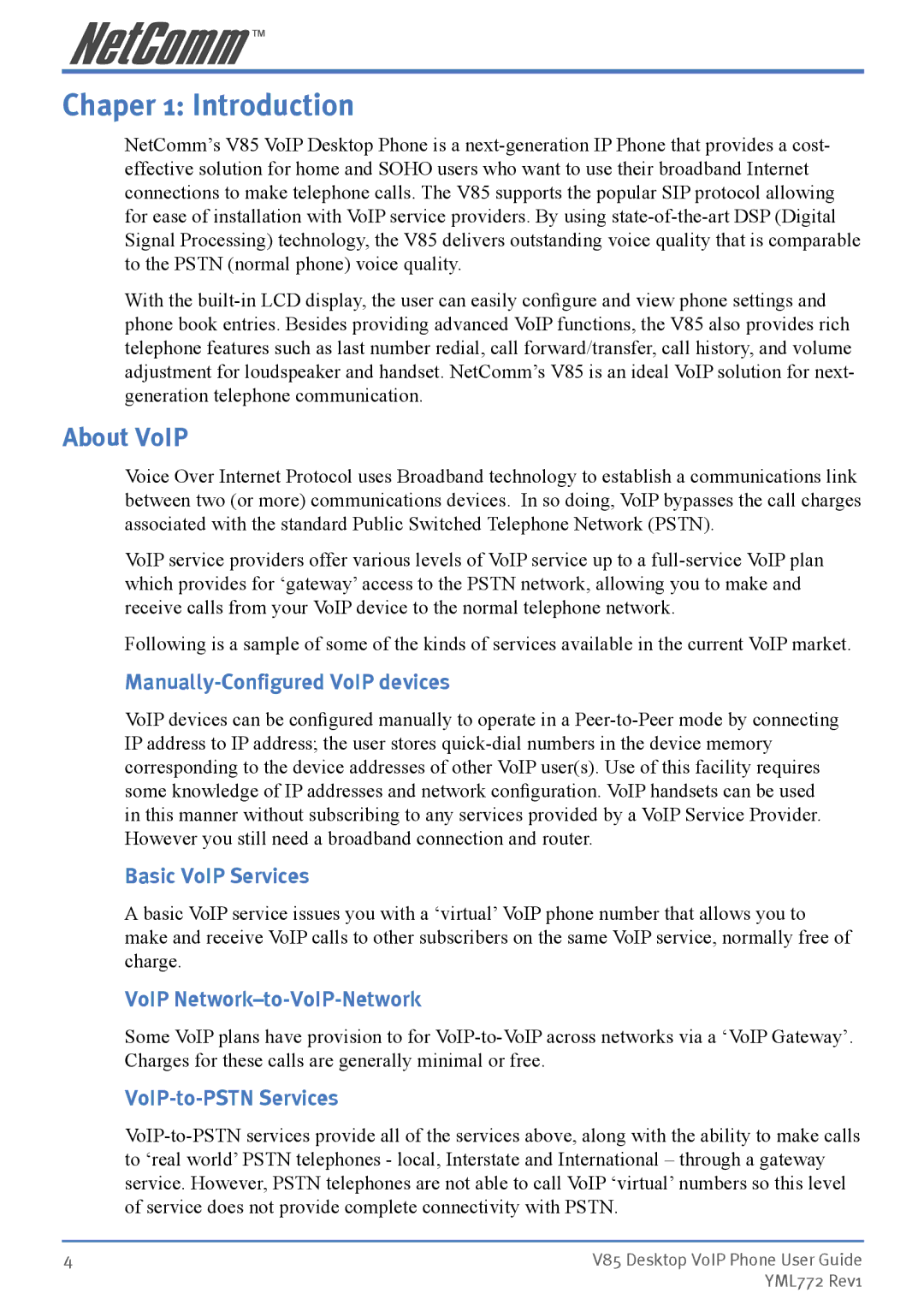Chaper 1: Introduction
NetComm’s V85 VoIP Desktop Phone is a next-generation IP Phone that provides a cost- effective solution for home and SOHO users who want to use their broadband Internet connections to make telephone calls. The V85 supports the popular SIP protocol allowing for ease of installation with VoIP service providers. By using state-of-the-art DSP (Digital Signal Processing) technology, the V85 delivers outstanding voice quality that is comparable to the PSTN (normal phone) voice quality.
With the built-in LCD display, the user can easily configure and view phone settings and phone book entries. Besides providing advanced VoIP functions, the V85 also provides rich telephone features such as last number redial, call forward/transfer, call history, and volume adjustment for loudspeaker and handset. NetComm’s V85 is an ideal VoIP solution for next- generation telephone communication.
About VoIP
Voice Over Internet Protocol uses Broadband technology to establish a communications link between two (or more) communications devices. In so doing, VoIP bypasses the call charges associated with the standard Public Switched Telephone Network (PSTN).
VoIP service providers offer various levels of VoIP service up to a full-service VoIP plan which provides for ‘gateway’ access to the PSTN network, allowing you to make and receive calls from your VoIP device to the normal telephone network.
Following is a sample of some of the kinds of services available in the current VoIP market.
Manually-Configured VoIP devices
VoIP devices can be configured manually to operate in a Peer-to-Peer mode by connecting IP address to IP address; the user stores quick-dial numbers in the device memory corresponding to the device addresses of other VoIP user(s). Use of this facility requires some knowledge of IP addresses and network configuration. VoIP handsets can be used in this manner without subscribing to any services provided by a VoIP Service Provider. However you still need a broadband connection and router.
Basic VoIP Services
A basic VoIP service issues you with a ‘virtual’ VoIP phone number that allows you to make and receive VoIP calls to other subscribers on the same VoIP service, normally free of charge.
VoIP Network–to-VoIP-Network
Some VoIP plans have provision to for VoIP-to-VoIP across networks via a ‘VoIP Gateway’. Charges for these calls are generally minimal or free.
VoIP-to-PSTN Services
VoIP-to-PSTN services provide all of the services above, along with the ability to make calls to ‘real world’ PSTN telephones - local, Interstate and International – through a gateway service. However, PSTN telephones are not able to call VoIP ‘virtual’ numbers so this level of service does not provide complete connectivity with PSTN.

